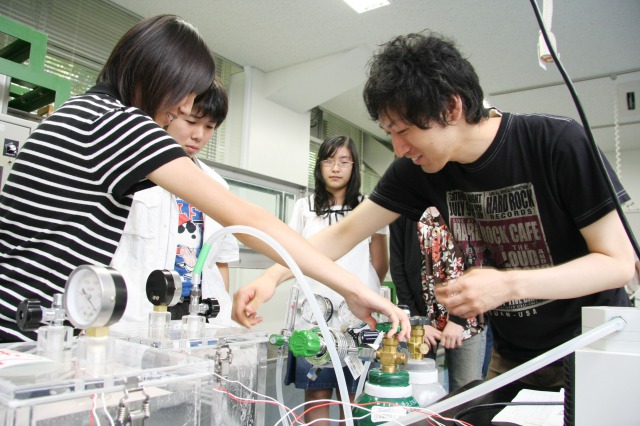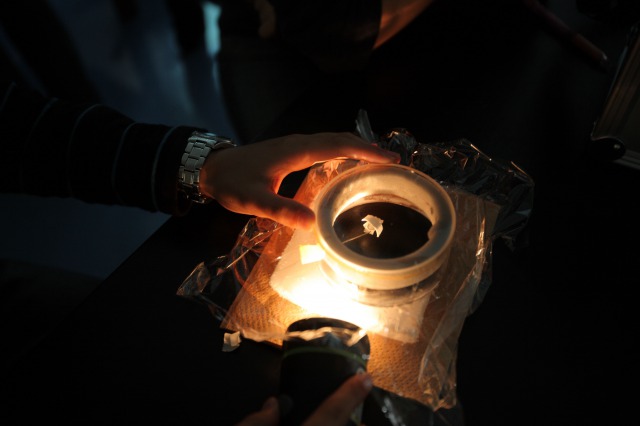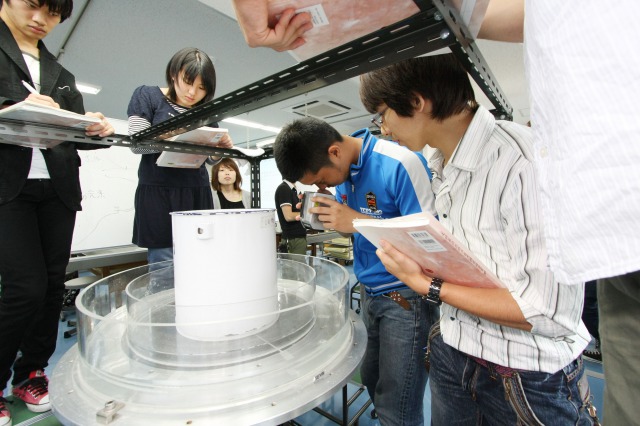Our unit on Earth and the environment includes three projects (3 sessions).
(1) The greenhouse effect and the warming of the planet

The sunlight in which Earth is bathed by the sun passes through the atmosphere to heat Earth’s surface; this results in the emission of infrared radiation, which is absorbed by global-warming gases in the atmosphere to heat the planet. In this project, we examine how dry air, carbon dioxide, and fluorocarbons absorb the infrared light emitted from Earth's surface, thereby increasing their temperature. We also investigate why increasing concentrations of greenhouse gases in the atmosphere promote global warming and why Earth is a warm planet. After completing these experiments, you will have a better understanding of why Earth is a warm planet.
(2) Environmental radiation

In this experiment you will collect naturally-occurring radioactive isotopes (nuclei arising from radon) that are present in the air on a piece of filter paper, then use a cloud chamber to observe the radiation (alpha rays and beta rays) emitted from this sample. You will also use a Geiger–Muller (GM) counter to measure the radioactive intensity of the sample, acquiring a qualitative understanding of radioactive isotope decay by following the time evolution of this intensity. These experiments will enrich your understanding of natural radiation—and polish your skills of thinking like a scientist by forcing you to confront the transmutation, through radioactive decay, of one substance into another.
(3) The grand feedback loop of Earth and its atmosphere

This experiment recreates the large-scale dynamics of Earth’s atmosphere in a rotating water tank to offer insight into meteorological variations associated with the vicissitudes of the strong westerly winds (the jetstream) in the atmosphere above Japan. This offers insight into baroclinic instabilities in atmospheric waves, explaining why weather changes from the west—and why Japan has four seasons—and offering insight into Japan’s snow-heavy winter last year and comparatively warm winter this year.